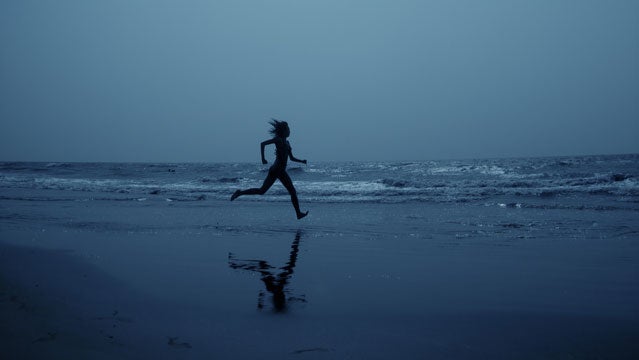Most likely, the issue at hand is something called optic flow. As researchers from the University of Essex define it, optic flow is the phenomenon that “creates a perception of a person’s movement relative to their surroundings.” It’s the reason, for example, that distant objects like big buildings down the street will appear to move more slowly as you run toward them than objects that are close to you, like the bushes and trees to your sides.
Last year, the University of Essex researchers published a study in the Journal of Sport and Exercise Psychology examining how optic flow affects perceived exertion during cycling. Fifteen cyclists performed four 20-kilometer time trials on a stationary bike. The first was a reference time trial in which the cyclists completed the 20 kilometers as fast as possible. In the other trials, cyclists rode in front of projected footage of a cycling course that represented (1) their actual speed, (2) a speed 15-percent slower than they were riding, and (3) a speed 15 percent faster than they were riding. The researchers gauged the cyclists’ power output and ratings of perceived exertion every four kilometers in each trial.
Even though there was no difference in heart rate or cadence between each of the trials, the cyclists underestimated their exertion when the scenery was going by 15 percent slower than when the scenery was going by more quickly or in proportion to their speed. In other words, the cyclists didn’t feel like they were working as hard when the scenery was going by slowly.
What does this mean for you? In general, when you’re running at night, you can only see objects that are close to you, which means the only objects you’re looking at to gauge your speed will look like they’re going by quickly. Which means you might feel like you’re working harder and running faster, even if you’re not.
Of course general time of day might also have something to do with it. Some researchers think that perceived exertion is greater at night than in the morning, possibly because heart rate and body temperature are lower in the a.m. Other studies, however, have found that perceived exertion isn’t much different whether you’re exercising in the morning or at night.
THE BOTTOM LINE: The dark is messing with your ability to properly gauge your speed according to the objects around you. And when it looks like you’re moving fast, even if you aren’t, you’ll feel like you’re working harder.


